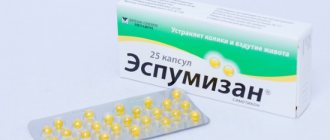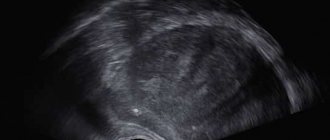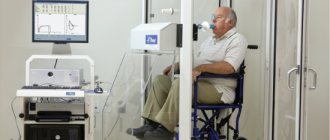Treatment of adhesions is aimed both at removing existing adhesions and at preventing their reappearance. The main method of treating adhesions in the fallopian tubes, ovaries and other pelvic organs is laparoscopy - an operation to split adhesions, performed through a puncture in the peritoneum under video image control. It should be noted that any surgical intervention in the abdominal cavity can initiate a new adhesive process, because adhesions in the fallopian tubes are the body’s response to the spread of inflammation and tissue trauma. Therefore, the decision to undergo surgical (laparoscopic) treatment must be justified.
In many cases, the adhesive process in women is asymptomatic and does not cause painful manifestations. In such cases, doctors can assume the presence of the disease based on indirect signs: infertility, dysfunction of various pelvic organs.
Mechanism of formation of adhesive disease
The serosa covers every internal organ. It is necessary for their normal sliding and functioning, and a person does not feel this movement. When internal organs are mechanically damaged, for example, during operations or injuries, the integrity of these membranes is compromised and they are damaged. The body is a thoughtful and self-protecting system, with a large compensatory reserve. In an effort to recover and protect itself, it starts the process of replacing the damaged area. And connective tissue fibers are formed that tighten the organs, and this prevents their normal sliding. It is these constrictions that form that are called adhesions. Each internal organ has its own ligaments that fix them in place; normally they are flexible and elastic. This ensures a normal level of organ mobility. But injuries, inflammatory diseases, surgeries are the main causes of changes in these ligaments. They may become thicker and unevenly dense. It is because of this that organs and anatomical structures are displaced. And in this area a section of excess voltage is formed. Over time, the adhesive process can grow and inelastically connect several organs, tissues and anatomical structures. Depending on the place of their formation, symptoms appear that are disguised as diseases. For example, if this happened in the chest cavity, then patients are bothered by pain in the thoracic spine, which is mistakenly associated with cardiac diseases. But an examination by a doctor and the treatment he prescribed does not bring relief, the symptoms persist, because the true cause has not been determined correctly. An adhesive process can also form in the pelvic area in women. And the reason is a history of surgery: artificial termination of pregnancy, removal of female reproductive organs, or it could be serious inflammatory processes.
How are adhesions on the female genital organs and infertility related?
The female reproductive system ensures the processes of fertility. However, for conception to be unhindered, all parts of this complex system must function normally and have the correct anatomy.
To understand why adhesions in the fallopian tubes are so dangerous, let's look at the function of each organ of the female reproductive system.
- Ovaries. These organs contain follicles - “houses” in which eggs live. In each menstrual cycle, as a rule, 1 follicle reaches maturity, from which an egg is released in the middle of the cycle. This process is called ovulation. If the ovary is shrouded in adhesions, then rupture of the follicle and the approach of the fallopian tube to it becomes almost impossible. This is the prerequisite for the development of one of the forms of adhesive infertility.
- The fallopian tubes. Their role is to “catch” the egg released from the follicle. If in the middle of the cycle there is a meeting with a sperm, then fertilization occurs in the fallopian tube, from where the blastocyst descends into the uterine cavity. This is why fallopian tube adhesions and pregnancy are closely related to each other. If there are adhesions, then the transport of the fertilized egg into the uterine cavity is disrupted.
- Uterus. Hormonal fluctuations during the menstrual cycle lead to the fact that in the second phase the endometrium undergoes secretory transformation, necessary for successful implantation of the embryo. However, if a woman has had repeated curettage of the uterine cavity, inflammatory processes of the uterus, then normal physiological processes may be disrupted. On the one hand, the endometrium is not properly prepared for implantation, and on the other, synechiae create mechanical obstacles for the attachment of the blastocyst. This is a uterine form of infertility.
Causes and symptoms of adhesive disease
If we talk about the reasons, then adhesions can form due to an irritating and traumatic factor acting in the chest, abdominal cavity, pelvic and cervical organs. This traumatic factor can be: • Inflammatory processes Which can damage the serous membranes of organs, and this is where adhesions are formed. In the chest cavity, pleurisy can provoke an adhesive process, in the abdominal cavity - peritonitis, etc. • Operations Any operation involves damage to the serous membrane, and fibrin clots accumulate on the internal organs. Normally, after a couple of days they dissolve thanks to the enzyme plasmin, but... Surgery is associated with insufficient blood supply to the tissues in the operated area, as well as other factors, and this enzyme may not be enough, and adhesions are formed. • Injuries The mechanism of formation of adhesions is similar to that during surgery. When the serous membranes are damaged, fibrin effusion occurs, and insufficient enzyme activity leads to the formation of adhesive disease.
In some cases, why adhesions formed cannot be understood. It seems that there are no reasons at all, but they exist, the main thing is to find them. Doctors from the Quality of Life clinic will help with this.
Symptoms of adhesive disease directly depend on where exactly it formed. For example, adhesions formed in the pleural cavity lead to frequent respiratory infections, shortness of breath, patients suffer from increased fatigue, decreased performance, and this condition only progresses over time. And the amount of work that previously did not cause fatigue becomes impossible over time. It is known that adhesions formed in this area lead to a feeling of discomfort in the cardiac region and a persistent cough that does not respond to drug therapy. If we talk about the adhesive process that forms in the peritoneum and all adjacent organs, this leads to deformation of the intestinal loops, which mechanically complicates the digestion process, and the nutrition of the intestinal walls is disrupted. In severe cases, this can even lead to the death of a section of the intestine. If we talk about complaints during adhesive disease, they are as follows: • pain of varying severity, it intensifies with physical activity or poor nutrition. The pain is spastic in nature; • chronic constipation, which is associated with impaired intestinal motor function due to deformation of the loops; • frequent bloating; • weight loss, which is explained by a violation of the absorption function of the intestine.
The process may be asymptomatic. However, we can say with 100% probability: if operations were performed on internal organs, then an adhesive process is formed.
If adhesions form in the pelvis, the complaints are even more varied: • acute pain, which intensifies with palpation of the abdomen, but it may return periodically or not bother at all; • possible nausea, even vomiting; • disorders of the digestive tract; • infertility, chronic adnexitis, menstrual irregularities, pain during sexual intercourse, etc.
With adhesions in the pelvic area, pronounced symptoms may be absent, and those that are present often go unnoticed. It is precisely this kind of inattention that leads to disastrous consequences.
Is it possible to get pregnant after removing an ovarian cyst?
You can get pregnant even with an ovarian cyst. Most often, they do not interfere with pregnancy, but they can make it difficult to conceive a child.
If during surgery only the cyst is removed or at least one ovary is left, the woman’s fertility is preserved. She may become pregnant in the future. Of course, you need to understand that reproductive function is affected not only by surgery. The ovarian reserve (the number of eggs in the ovaries - it constantly decreases with age) and concomitant diseases play a role.
Get a consultation with a doctor at the Euroonko clinic. Our doctor will tell you whether treatment is needed in your case, what type of surgery is indicated for you, and what is the likelihood that you will be able to conceive and carry a pregnancy in the future.
Book a consultation 24 hours a day
+7+7+78
Adhesive disease: consequences
Normally, internal organs are mobile, but formed scars and adhesions prevent this mobility, which impairs their functional mobility and work. In addition to the consequences directly for organs, adhesions disrupt the functioning of nearby structures. And the consequences can be very sad and serious: infertility in men and women can develop in the pelvic organs, prostatitis in men, colitis, and limited mobility in joints. There are cases when adhesions do not manifest themselves and do not cause significant discomfort. However, in 99% of cases with adhesions, a pronounced pain syndrome is formed, but it is difficult to determine the cause of the pain, and treatment is ineffective. With adhesions in the abdominal cavity, the mobility of the vertebrae can be limited, the load on various parts of the spine changes, and intervertebral hernias are formed. Another possible scenario is the formation of idiopathic scoliosis.
The term "idiopathic" means that the cause is unclear and has not been identified. However, in this case, everything is not so simple. And more often than not, they don’t even think about spikes, they don’t attach any importance to them and the consequences they provoke.
Diagnostics
The disease can be suspected if there are relevant patient complaints and medical history. To confirm the diagnosis, a number of examinations are carried out, which include:
- Ultrasound - adhesions in the pelvis are detected in the form of heterogeneous echo signals;
- Hysterosalpingography and hysterosalpingoscopy - performed to assess tubal involvement;
- MRI of the pelvic organs;
- Diagnostic laparoscopy is effective for visualizing adhesions between organs.
To identify the causes of adhesions, laboratory tests may be prescribed: determination of flora, STIs, PCR diagnostics, etc.
Main tasks in the treatment of adhesions
In case of adhesions, patients are offered conservative or surgical treatment. And the main task of the last method of treatment is to cut the formed adhesion and ensure physiological mobility of the organs. More often the operation is performed laparoscopically, but a new adhesion may form, because this is a natural reaction. Yet in some cases, for example, intestinal obstruction caused by adhesions, surgical intervention is the only way to help the patient, otherwise the consequences can be fatal and very dangerous.
Therapy is always based on an integrated approach and determining the reasons for their formation, calculating the consequences that already exist and may develop, and all actions should be aimed at eliminating and preventing them.
Methods for eliminating synechiae
How to cure adhesions in the fallopian tubes and how to get pregnant? Various methods can be used aimed at restoring the normal functional and anatomical state of these organs. In unadvanced cases, it is possible to cope with the problem conservatively; in advanced cases, surgical intervention is performed. However, with the fourth degree of adhesive disease, its effectiveness does not exceed 15-20%.
The solution to this situation is IVF. In this case, the fallopian tubes are not involved in the process, and a 3-5-day embryo is immediately implanted into the site of its future implantation (uterine cavity). IVF for tubal infertility is the most successful, and the percentage of successful attempts is quite high.
Medication
Drug treatment can be effective during exacerbation of the chronic process, when fluid is detected in the fallopian tubes. Timely prescribed antimicrobial therapy helps stop inflammation, prevent excessive adhesions and restore patency of the fallopian tubes. For already formed synechiae, conservative treatment methods are ineffective.
Physiotherapy
Physiotherapy is used at the next stage of treatment of the inflammatory process, after it subsides. The method is also indicated in the early postoperative period to prevent the formation of adhesions. The most optimal method and dosage regimen is selected by a qualified physiotherapist who specializes in the gynecological field.
Laparoscopy
Is it possible to remove adhesions in the fallopian tubes? Yes, with the help of their dissection during laparoscopy. However, the risk of relapse is quite high. Therefore, such operations are performed on a limited number of women.
If IVF is planned, then laparoscopy can be a preparatory step. In this situation, surgery involves complete removal of the fallopian tubes. A tubectomy is performed when the tube is completely blocked and there is an increased risk of ectopic pregnancy.
Benefits of osteopathic treatment
It is worth immediately noting that with osteopathic treatment of adhesions or scars it is impossible to completely get rid of them. Various techniques can only make them more elastic and soft. If the adhesion has become pliable, it no longer restrains the physiological mobility of organs, therefore, the risks are minimized. Only a doctor with extensive experience can treat. Soft and gentle techniques do not cause side effects and can be performed on patients of all ages. There are practically no contraindications for health reasons.
Osteopathic treatment is a technique that allows you to restore mobility and normal functioning of organs without surgical intervention. This is its main advantage.
During osteopathic treatment, a gentle effect is exerted on the internal organs, and it is possible to restore their normal position and mobility. Pinched nerves are released, which allows you to get rid of pain and stiffness of movement. The release of blood vessels normalizes tissue nutrition. An osteopath will not only eliminate tension in the ligaments, but also give elasticity to the adhesions. This will prevent the development of consequences for the body.
The osteopath will restore normal lymph flow, blood circulation, and muscle tone. As a result, pain, stiffness, discomfort go away, movement and well-being are normalized.
An osteopath cannot remove old adhesions; only surgery can do this. However, a doctor can restore the mobility and functioning of internal organs even with adhesions. After just a few sessions, there is a significant improvement in the condition and elimination of unpleasant symptoms.
Therapeutic exercise at different stages of rehabilitation
In order for physical therapy to bring maximum effect, it is important to start rehabilitation as early as possible. If the patient’s condition allows, it is possible to perform certain exercises the very next day after surgery, and continue recovery until stable results are achieved.
Therapeutic exercise can be used at all stages of rehabilitation: 1. Immobilization. It lasts from the completion of surgery until the stitches (or plaster cast) are removed. The duration of the immobilization stage depends on the type of operation, but rarely exceeds 2 weeks.
The list of rehabilitation measures includes breathing exercises to prevent pneumonia, preparing the patient for physical exercise, as well as a set of exercises themselves. At the initial stage, they consist only of weak muscle contractions, but as the condition stabilizes, the program becomes more complicated. Physiotherapeutic procedures are indicated 4-5 days after the intervention.
2. Post-immobilization. It begins after the stitches or plaster cast are removed and lasts up to 3-4 months. At this stage, the key attention is paid to increasing the range of movements, strengthening the muscular system and fascia, and eliminating pain. Physical therapy exercises and physiotherapy are the basis of rehabilitation measures.
Rehabilitation is carried out both in the hospital and after discharge. In a medical facility, recovery is based on high-intensity activities so that the patient can leave the clinic as soon as possible. In a hospital setting, physical therapy may include exercises on medical simulators, in water, as well as independent exercises in the ward. Exercise therapy methods are complemented by manual and physical therapy - electrophoresis, ultrasound and heat treatment.
The outpatient stage is also important: it is needed to consolidate the results obtained. The duration of this period ranges from 3-4 months to 3 years. On an outpatient basis, patients continue exercise in sanatoriums, medical clinics and specialized medical institutions. At the Quality of Life clinic you can undergo rehabilitation after surgical interventions of any complexity. We practice a multidisciplinary approach, involving the involvement of doctors of various specialties - osteopaths, physiotherapists, psychologists. The volume, intensity and algorithm of physical exercises are selected taking into account the rehabilitation potential of each patient. Regular physical exercise under the supervision of specialists with more than 15 years of experience restores joint mobility, strengthens the muscle corset, increases range of motion and has a beneficial effect on the body as a whole. The sooner the patient begins to engage in physical therapy, the higher the effectiveness of recovery will be.
However, physical exercise is only one component of comprehensive rehabilitation. Postoperative recovery includes many aspects to ensure quality results and return patients to their normal lifestyle as quickly as possible. Our specialists are fluent in active and passive techniques (PNF, Vojta therapy, PIR, MFR, massage, kinesiotaping, kinesitherapy, stretching, Neurac, REDCORD), which allows us to engage in rehabilitation both in the earliest stages after surgery and in particularly advanced cases. cases.
Preventing the adhesive process: is it possible?
After the operation, a process of rehabilitation and recovery follows. And one of its tasks is to resist adhesions. Everything must be done to prevent them from forming. There are several ways to achieve your goal. But the main thing is the possible refusal of surgical intervention, and if this is not possible, then, if possible, use laparoscopic operations. Thus, the likelihood of their formation is somewhat lower. Immediately after the operation, therapeutic exercises are recommended; while still in bed, patients are advised to begin breathing exercises under the supervision of doctors. In the future, the plan of therapeutic exercises is determined individually, and this depends on the patient’s condition, the type of operation performed and its technique, and, of course, how it went - whether there were any complications. Osteopaths at the Quality of Life clinic will carry out comprehensive work to diagnose and eliminate the pathological process. Consistent work from cause to effect will allow you to achieve positive results, and, in many cases, avoid surgical intervention.
Similar articles:
- Directions
- Specialists
- For visitors
- Articles and videos
“Healthy Summer” 1000 rubles discount on an appointment with osteopathic doctor E.A. Ukhmylin.
Adult admission 6 thousand, children admission 5 thousand.
How to reduce the risk of formation of adhesions on the fallopian tubes?
The main preventive measures are as follows:
- Prevention of inflammatory processes in the genital organs. To do this, it is recommended to avoid casual sex, use barrier methods of contraception (condom), monitor intimate hygiene and regularly visit a gynecologist for preventive examinations, because Many infections can remain asymptomatic for a long time.
- Reliable contraception to prevent unplanned pregnancy and associated abortions. Today, the most effective and recommended is hormonal protection. A gynecologist will help you choose the most optimal drug.
- If possible, conservative rather than surgical treatment of gynecological diseases. Any operation, even the most gentle laparoscopic one, leaves its mark. Taking into account the individual characteristics of collagen formation, there are categories of women who are distinguished by a pronounced adhesive process that developed after surgery.
For all questions of reproductive health, please contact the SM-Clinic clinic. Our staff includes qualified gynecologists, reproductive specialists and doctors of related specialties who work as a team to help you realize your dream of motherhood. The SM Clinic has introduced advanced diagnostic and treatment methods, incl. use of assisted reproduction methods.
Contraindications
An incorrectly designed exercise therapy regimen can seriously worsen the condition. For example, with dystrophic or degenerative pathologies of the joints and spine, as well as with diseases of the muscular system of the back, excessive physical activity and exercises with sharp jerks accelerate the wear of cartilage and bone tissue. Therefore, only the doctor should draw up a strategy for recovery after surgery after studying the medical history, the characteristics of the intervention performed and a complete examination of the patient.
Therapeutic exercise is contraindicated for: - embolism and thrombosis; — intoxication of the body; - presence or increased risk of bleeding; — oncopathologies in the acute stage; - hypertension. Absolute contraindications also include acute and subacute stages of disease, severe pain and elevated body temperature.
FAQ
Is physical therapy prescribed for hypertension?
Physical activity for arterial hypertension should be selected in accordance with the patient's condition, the stage of postoperative recovery and the type of surgery performed. Patients suffering from high blood pressure are selectively prescribed a course of exercises.
They strengthen the body, improve the functioning of the central nervous system, cardiovascular and other systems. physical therapy normalizes motor-vascular reflexes and vascular tone, improves metabolic processes in the body.
Can pregnant women do physical therapy?
Pregnant women, as a rule, undergo only urgent and emergency interventions. After such a procedure, you can exercise, but the training regimen should be prescribed exclusively by a doctor.
Different training plans are recommended for different trimesters; it is extremely important to correctly select and dose physical activity and avoid overwork.
Is physical therapy allowed for diabetes?
Methods of physical therapy are indicated for diabetes types 1 and 2. Performing physiologically correct and correctly selected movements not only enhances the effect of insulin, but also makes it possible to reduce its dosage.
Therapeutic exercise has proven effectiveness in the fight against muscle weakness and adynamia - frequent companions of diabetics. If the patient is overweight, physical therapy helps normalize fat metabolism and reduces fat deposition.
What about home workouts?
You can practice at home, but you should start only under the supervision of a rehabilitation medicine specialist. Postoperative muscle trauma does not reliably identify the extent of disorders, so the doctor must determine the duration and intensity of the training. The specialist should also teach the patient the correct technique for performing movements and give recommendations for exercises at home.








